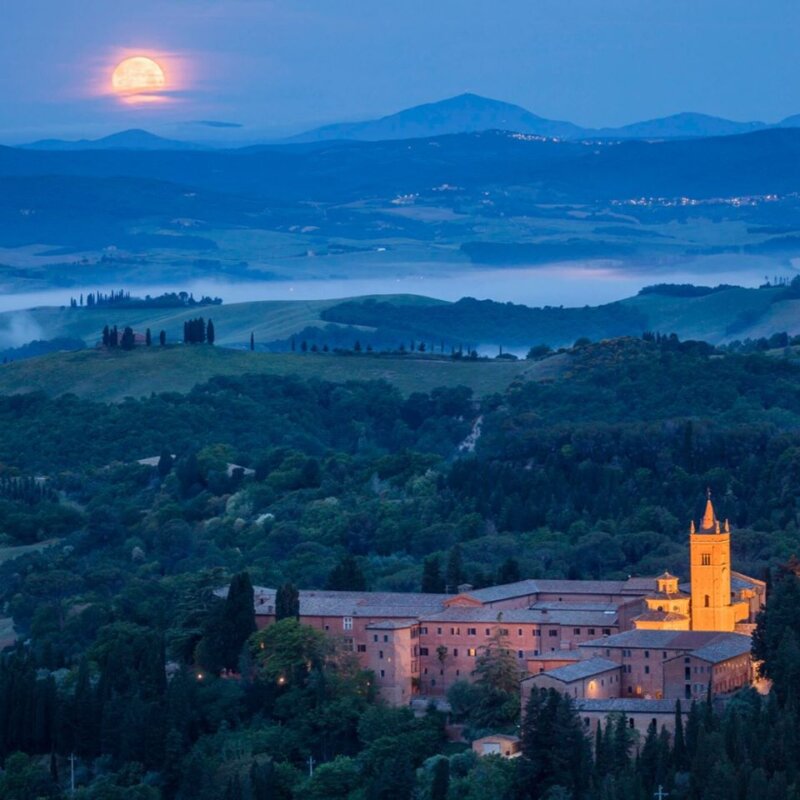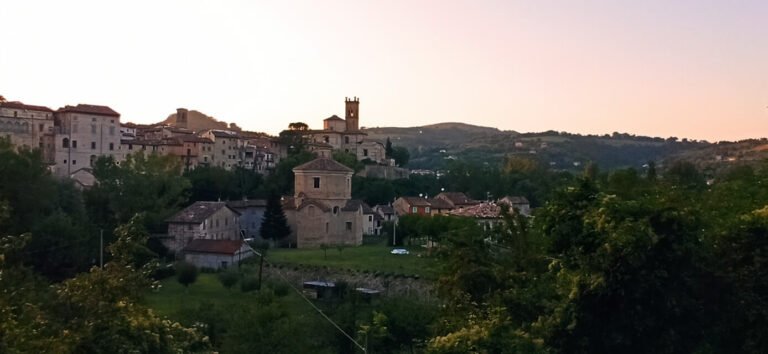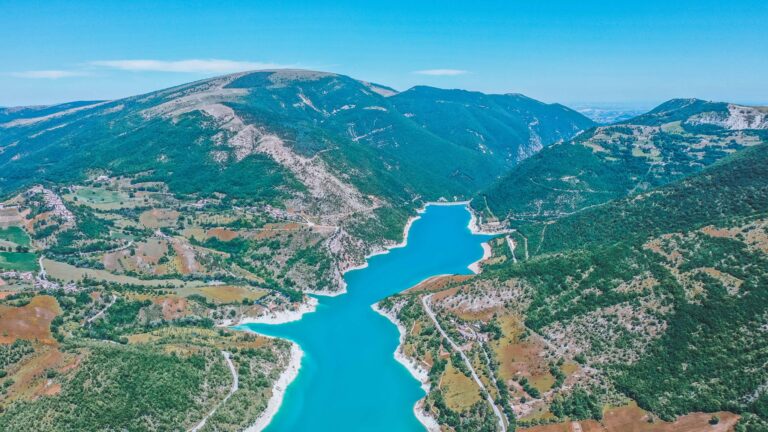The Mysterious Abbey at Monte Oliveto Maggiore
Ley lines, earth energy vortices, and power centers are not often associated with Italy. These terms are usually linked to places such as Sedona, the Pyramids, and Stonehenge. Nonetheless, a secluded medieval abbey in southern Tuscany seems to rest on exactly such a spot.

According to locals and ex-pats living in the Tuscan region of Le Crete, the area surrounding the Abbey of Monte Oliveto Maggiore abounds with inexplicable positive energy. Inhabitants appear to live longer than the average, enjoy excellent health, and everything that either grazes or grows is similarly improved. It is not uncommon to see centenarians, still in good health with all original parts, including teeth, nonchalantly tending fields. In the 80s, studies corroborated, at least in part, this high level of good health and longevity enjoyed by the inhabitants. The olive oil does taste better, and the ground yields a bit more of whatever is planted.
Abbey monks, following age-old recipes, continue to transform simple herbs and berries into quite enjoyable liqueurs that seemingly restore ailing kidneys, digestive systems, urinary tracts, and colons. If magic potions are not your cup of tea, you may be tempted to freely taste some of their organic wines, extra virgin olive oil, spelt, honey or Sambuca. The Olivetan monks, a separate branch of the Benedictine Order, have lived here since 1319. Not the same monks, mind you. No one lives that long nowadays, no matter how much elixir they imbibe.
Aside from the lure of longevity, the Abbey at Monte Oliveto Maggiore is a fascinating day trip. As you venture across the drawbridge into this monastic enclave, the past embraces you. A wide avenue beyond the gatehouse leads to the impressive Gothic façade of the church. The route is marked by botanical gardens on one side and tall whispering Tuscan cypresses on the other. The tower, library, apothecary, cloisters, and church are adorned by many Renaissance masters’ works, including della Robbia, Signorelli, and Sodoma. You may sample some of their artwork here — click on the links at the bottom of the page for more.
Visitors are welcome to tour the abbey compound. It is open daily from 9:15 am to noon and from 3:15 pm to 5 pm in winter or 6 pm during summer. The luckiest visitors are those that can get me to the church on time. Each morning at 7 am, the Mass is celebrated with Gregorian chants. At 6:15 pm, the monks are singing their vespers and the rosary. Try to get here early or stay on to enjoy another magical, mystical tour at the monastery of Sant’Antimo. This part of Tuscany is filled with enchantment, remains uncluttered by mass tourism, and makes a great base for exploring much of central Italy. My next post will reveal some of the interesting hill towns that surround these abbeys.
In the meantime… Centanni (a common Italian toast wishing you 100 years of life)


